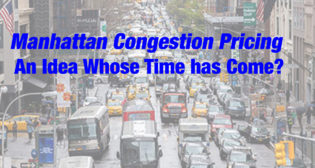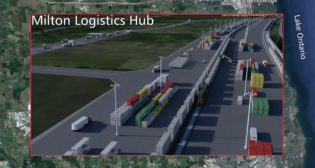
For Volkswagen, versatility
Written by Nebraska Digital, administratorAuto-Max® makes the grade in Mexico. Most, if not all, of the advances in motor vehicle transport by rail have come about through cooperative efforts involving the railroads, railroad suppliers, and manufacturers. Railroads transport about 70% of finished vehicles in specialized railcars equipped with mostly premium components that protect vehicles in transit from loss and damage.
But equally challenging as satisfying the manufacturers’ stringent quality and safety requirements is the railroads’ ability to fit into an increasingly complex logistics progress in a market that can change very quickly.
In Puebla, Mexico, the Volkswagen de Mexico S.A. de C.V. plant churns out new Jettas and Beetles at a rate of about 2,000 vehicles per day—36 hours from sheet metal stamping to a final test drive and quality check. VW relies on a JIT (just-in-time) supply of parts and subassemblies. A huge storage facility within VW’s massive assembly complex holds 11,500 vehicles waiting for shipment to Mexican dealerships and export destinations. About 20% of the cars produced in Puebla are for domestic consumption within Mexico, so 80% of the vehicles are for export—50% to the U.S. and Canada, 30% globally (primarily Europe and South America).
VW intends to ship an increasing number of export vehicles by rail, and following an extensive evaluation process, its railcar of choice is Greenbrier’s adjustable-deck, two-unit-articulated, tri-level Auto-Max®, specifically, the Auto-Max II. This latest-generation Auto-Max® features improved safety and security and weight-saving features like tight-sealing composite doors with inside access ladders, integral bridge plates, composite decks, and a stainless-steel-reinforced neoprene bellows at the articulation point. In its “Gamma” (equalized deck setting) configuration, which accommodates vehicles as tall as 72 inches, the 145-foot-long Auto-Max II can hold 24 Jettas, or 20 Jettas and 5 Beetles, while providing a loaded weight savings of 1,500 pounds per vehicle over a traditional, fixed-deck tri-level autorack. At the Puebla complex, five loading tracks, each about 1,300 feet long (400 meters), accommodate nine Auto-Max cars each.
VW, which exports automobiles to several distribution points in the U.S. and Canada, wanted the best shipping cost per vehicle, but more important, improved logistics. “We’ve been competitive with our products, and we are constantly looking to improve our logistics and make it more competitive,” says Manager-Transport Planning Alfonso Gutierrez. VW, which is a member of AMIA (Associación Mexico Industrial Automotive, Mexico’s auto industry trade association), held a workshop in early 2008 involving eight railroads—Kansas City Southern, BNSF, Union Pacific, Norfolk Southern, CSX, Ferromex, Ferrosur, and Chiapas Mayab—to explain its material and vehicle distribution processes including quality objectives and inviting the railroads to analyze VW de Mexico’s Logistics and the participation of railroad in the inbound and outbound process. Within this workshop it was requested that all rail companies seriously assess Auto-Max equipment and submit their proposals to VWM; therefore, this workshop is considered the beginning of Auto-Max era for VW Mexico.
Following several tests with the Auto-Max to evaluate storage, loading, and security factors, VW awarded a three-year contract to KCS and BNSF to transport vehicles to a mixing facility in Houston. There, the vehicles are off-loaded, combined with imported Volkswagen models, reloaded, and sent to U.S. and Canadian destinations. The Auto-Max, according to KCS Vice President-Intermodal and Automotive Brian Bowers, “is a critical part of our automotive strategy. It’s the right car for this service. It offers lots of flexibility in terms of vehicle dimensions. You don’t get that with a traditional autorack. The autorack fleet is sub-optimized, because there were many configured as bilevels when SUVs and light trucks were in demand.” The market quickly shifted to smaller, more fuel-efficient cars and crossovers, and bilevels have come up one deck short.
Ferromex is also enjoying some success with the Auto-Max for joint movements with BNSF to the West Coast , according to Subdirector-Automotive Carlos Lerma. Feromex has a pool of 72 dedicated cars for domestic service and across the Ciudad Juarez-El Paso border crossing. The fleet is expected to grow to as many as 350 cars, long term. “Many auto manufacturers in Mexico are asking us to use the Auto-Max,” Lerma says. “One reason why the demand for these cars is increasing is because we encounter far fewer situations with security and safety of the Auto-Max than with autoracks.”
Greenbrier firmly believes that it’s time that new technology move into the motor vehicle market. “The autorack is a 50-year-old technology,” says Vice President, Marketing Bill Bourque. “It no longer addresses the needs of the automotive industry and the changes taking place. Fuel price increases have changed consumer preferences toward passenger vehicles that need to be transported three high. At the same time, we are transporting newer, higher profile vehicle designs that combine fuel efficiency but afford greater headroom. Many of these new designs, which traditionally were loaded in tri-levels, now have to be loaded in bi-levels. Automobile manufacturers have moved toward more flexible manufacturing that combines SUVs and passenger cars in the same plant, which requires both bi-levels and tri-levels. Shifting between the two car types is not efficient equipment utilization. The solution is to introduce a single, versatile technology that accommodates all of these vehicle combinations—like the Auto-Max.
For the railroads, the Auto-Max also provides improved fuel economy, reduces their carbon footprint, and better utilizes existing line-haul and terminal capacity.”



